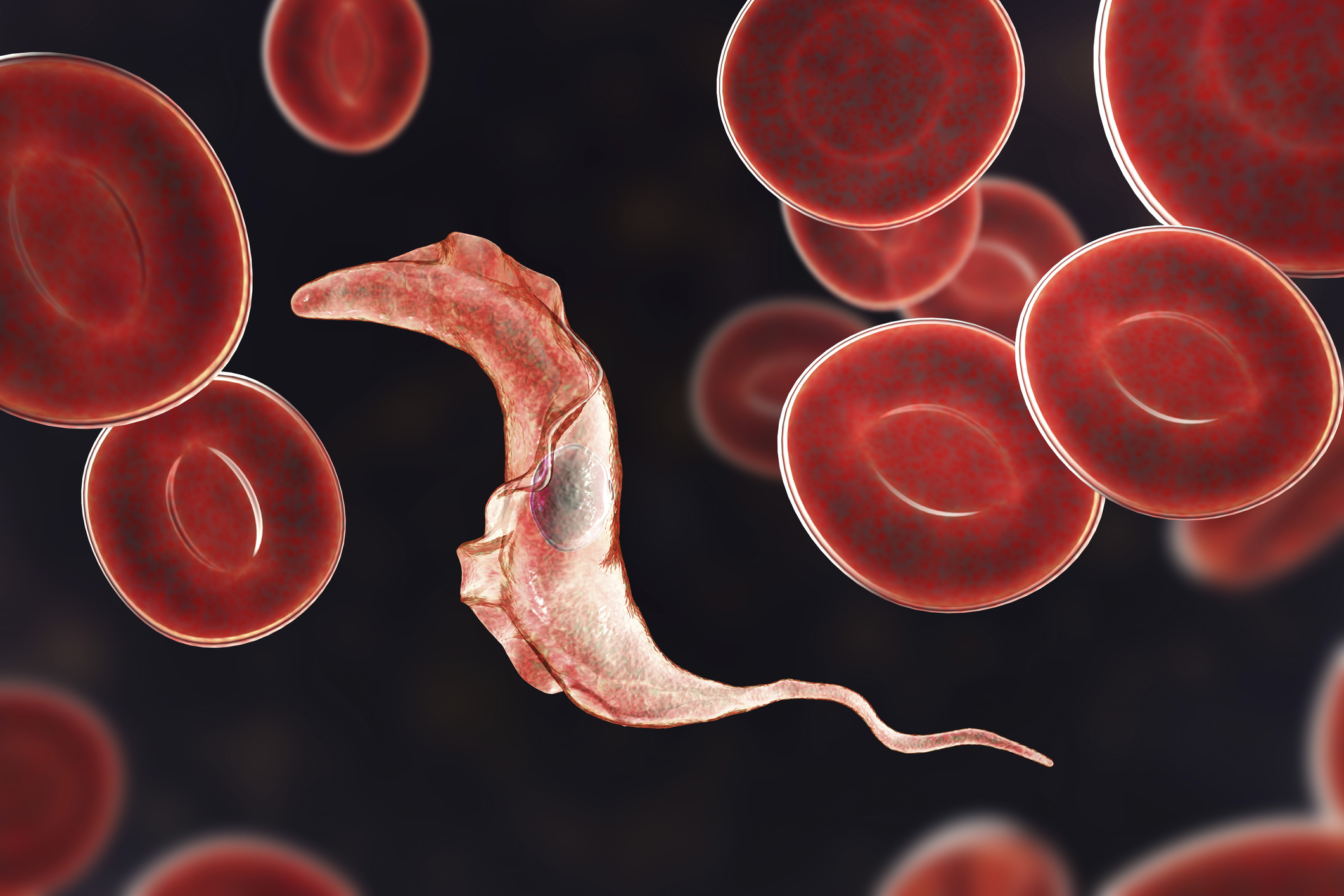

In spite of a cavity found between the horny and the malpighian layers of the epidermis a winding skin tract was not clinically described.
/hookworm-overview-4176230_FINAL-5c05c35ac9e77c0001e0b249.png)
Pathology showing cutaneous Ancylostoma larvae is consistent with larva migrans. Dilated blood capillaries, edema and eosinophils are found within the subcutaneous fat tissue. Sweat glands and hair muscles are unremarkable. Linphocytes, macrophages and eosinophils infiltrate around the sebaceous gland hair follicle. The sections also showed within the same sebaceous gland a small part of a second apparently dead helminth larva. All of this features as well as the shape of the esophagus and the esophageal-intestinal junction are consistent with those of an infective larva of the genus Ancylostoma. From the way the sections of the larva lies in the tissues, it is estimated that the larva is at least 550 micrometers long and is probably more than 600 micrometers. Under oil immersion objective double lateral cuticular alae were noted. The following measures were taken: maximum width 20 micrometers, nerve ring from anterior end 75 micrometers, lenght of the esophagus 140 micrometers. The head and the entire esophagus could be seen. Nearly longitudinal sections of helminth larva were found in a sebaceous gland. There is also slight diffuse interstitial edema. There were peri-capillary infiltration of limphocytes, macrophages and eosinophils. The dermal blood capillaries had thick walls.

There were moderate spongiosis and elongation of rete ridges. Microscopy ( Figures 1, 2 and 3): Sections of scalp skin presented with an epidermal cavity between the prickle cell and horny layers and partly filled with eosinophilic debris as well as some polimorphonuclear neutrophils.
Pictures of hookworms in humans Patch#
Scalp patch measuring 1.3 x 1.2cm on the epidermal surface, without any changes in the cut surface. The lesion was single, involutes spontaneously and, after some time, relapsed. After some 20 days she noticed a bean-sized pruriginous, soft, superficial, right occipital scalp papule. Three months prior to the examination she had laid to rest on a river shore in the city of Rifaina, São Paulo State, Brazil. This was a 12-year old, white, student, female from Uberaba, Minas Gerais State, Brazil, who owned a pet dog. This report describes helminth larvae within a sebaceous gland as well as discusses how they were able to arrive to such a site. The infective larvae on contact with human skin are able to perforate the epidermis but usually fail to reach the dermis 6. Human beings rarely are the final hosts 5. Dogs and cats are the natural reservoirs 6. Ĭutaneous larva migrans, also known as creeping eruption, is caused by small bowel dwelling helminths, usually Ancylostoma brasiliense. Destaca-se a possibilidade do helminto sediar-se em locais pouco usuais, das glândulas sebáceas serem via de penetração de larvas na pele e discute-se o provável mecanismo pelo qual o agente implantou-se no anexo cutâneo. Resumo Relata-se caso de larva migrans ou dermatite linear serpiginosa no couro cabeludo de adolescente, no qual o ancilostomídeo foi encontrado no interior de glândula sebácea. The probable mechanism by which the parasite reached the skin adnexa is discussed. The unusual skin site for larva migrans as well as the penetration through the sebaceous gland are highlighted. An ancylostomid larva was found within a sebaceous gland acinus. Lucinda Calheiros Guimarães, José Humberto Silva, Kaissor Saad, Edison Reis Lopes and Antonio Carlos Oliveira MenesesĪbstract A case of larva migrans or serpiginous linear dermatitis on the scalp of a teenager is reported. Larva migrans em glândula sebácea do couro cabeludo Larva migrans within scalp sebaceous gland


 0 kommentar(er)
0 kommentar(er)
